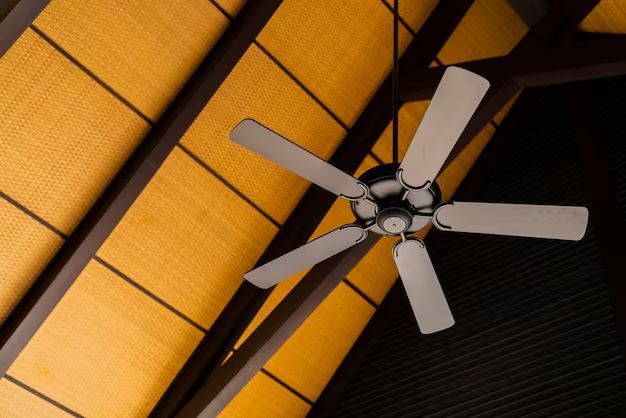Installing a ceiling fan can seem daunting, but it’s easier than you think. One key decision you’ll need to make early on is whether you need a mounting bracket. Let’s look at what a mounting bracket is, when you need one, and some recommendations.
Page Contents
What is a Mounting Bracket?
A mounting bracket (also called a ceiling fan mount) provides a secure anchor point to hang a ceiling fan from the ceiling. It is mounted directly to a ceiling joist and provides a stable, vibration-free platform for the fan.
Most mounting brackets consist of:
- A flat, square, or round metal plate that attaches to the ceiling joist.
- A threaded opening to secure the downrod and fan.
- Bolts to securely attach the plate to the ceiling joist.
Good quality mounting brackets are designed to easily handle the weight and motion of a ceiling fan. They should be made of durable steel or thick plastic.
When Do You Need a Mounting Bracket?
Here are some of the most common scenarios when you’ll need a mounting bracket for your ceiling fan installation:
- New installation – If you’re installing a new ceiling fan where one didn’t exist before, you’ll need a mounting bracket to attach the fan securely to the ceiling.
- Replacing existing fan – When replacing an old ceiling fan, you should also replace the existing mounting bracket with a new one. Old brackets can wear out over time.
- Heavy or large fans – Larger ceiling fans or those with light kits should have a mounting bracket rated for the additional weight.
- Angled/vaulted ceilings – On angled or vaulted ceilings, a mounting bracket allows installing a fan where a regular junction box will not work.
- No existing junction box – If there’s no existing electrical junction box, a mounting bracket can be installed directly to a ceiling joist.
Most reputable ceiling fan manufacturers recommend always using a mounting bracket, even if one already exists, to ensure safety and stability.
Do You Need a Bracket with an Existing Junction Box?
If there is already a ceiling electrical junction box then you have two options:
- Use just the existing junction box to hang the fan if it’s rated for the fan’s weight.
- Install a mounting bracket next to the junction box. This provides more stability and allows for optimal placement of the fan.
Older junction boxes, especially in older homes, may not be sufficient to hang a ceiling fan. Attaching a mounting bracket is often the best option.
Mounting Bracket Recommendations
Here are some top-rated mounting brackets to consider:
| Brand | Model | Description |
|---|---|---|
| Westinghouse | 0111000 | Sturdy steel bracket with rubber vibration dampeners. Rated for fans up to 70 lbs. |
| Home Decorators | FB540-OBB | Heavy duty cast aluminum bracket for fans up to 100 lbs. Has extra steel support plate. |
| Hampton Bay | 54016 | Low profile bracket made of steel. Rates for up to 35 lb fans. |
| Fanimation | FPB008-OB | Durable plastic mount rated for 50 lb fans. Easy installation. |
| Emerson | CF765 | Trusted metal bracket rated for fans up to 65 lbs. |
Be sure to get a bracket rated for the weight of your ceiling fan. Also pay attention to the type of mounting – some are designed for standard flat ceilings, while others are made specifically for angled or vaulted ceilings.
How to Install a Ceiling Fan Mounting Bracket
Here is a quick overview of installing a mounting bracket for a ceiling fan:
- Turn power off at the breaker.
- Trace the outline of the bracket plate on the ceiling and drill holes for anchors.
- Secure the mounting plate to a ceiling joist using wood screws or included lag bolts.
- If needed, install an extra steel brace across two joists for additional support.
- Install the downrod and ceiling fan motor onto the bracket by inserting and tightening the support bolt.
- Follow fan instructions to wire the fan and light kit.
- Turn power back on and enjoy your new fan!
Always follow the detailed instructions provided with your specific mounting bracket. Take time positioning the bracket to ensure it lines up properly with your ceiling fan.
Safety Tips
- Turn off power at the breaker before installing bracket.
- Always secure bracket to a structural ceiling joist.
- Don’t install ceiling fan bracket onto just drywall or plaster.
- Use appropriate anchors for your ceiling type.
- Double check all connections are tight.
Conclusion
Installing a sturdy mounting bracket provides a safe, secure anchor point for your ceiling fan. It allows the fan to hang properly on any ceiling surface. Brackets are inexpensive fan accessories that prevent vibrations and accidents. They are required in most new fan installations and replacements. Be sure to choose a quality bracket rated for your fan’s size and weight.

